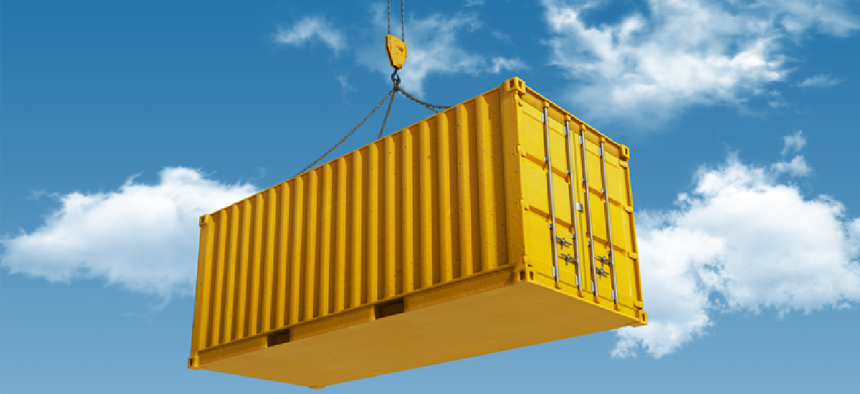How to leverage containers for cloud migration


Connecting state and local government leaders
Containers can streamline the cloud migration process, saving time and headaches along the way.
With the passage of the Modernizing Government Technology Act in December, federal agencies find themselves with a unique opportunity to innovate and update their legacy IT infrastructure. A top priority in their modernization endeavors? Transitioning legacy applications to the cloud.
Cloud migration may seem daunting, but it shouldn’t cause panic. There are technologies and best practices available to help make the transition less painful.
One of the most effective cloud technologies agencies should consider are containers. The technology offers agencies numerous benefits including cloud provider flexibility, an efficient transition, cost savings, an environment for DevOps and a clear path to modernization.
Flexibility. The first challenge cloud transition is selecting a cloud service provider. Unfortunately, if an agency writes its applications for one specific CSP, it could be locked into that provider's proprietary platform and architecture.
Employing containers, however, eliminates the chance of being bound to a single CSP. By refactoring applications into bite-sized chunks or microservices, containers give applications an isolated, self-contained environment with everything they need to run. In this way, containers allow for an extraordinary degree of portability, enabling applications to reliably run even when moved from one environment to another. Using containers, agencies can easily transfer their applications to a new CSP and run them without sacrificing quality.
Cost savings. The flexibility of containers can also lead to potential cost savings. For instance, if an application is written for an agency's current CSP, which later raises its prices, the agency could be locked into that provider's cloud infrastructure because leaving that platform could be prohibitively complicated, time-intensive and expensive.
By using containers and microservices, however, agencies can protect their investments in those applications and migrate with relative ease to a new CSP. With proper container architecture in place and the right application design, agencies can move workloads from one CSP platform to another without skipping a beat, ultimately saving time and money spent on writing applications.
Efficiency. Another key benefit of containers and microservices is the ability to break large software projects down into smaller, more independent modules. Building applications in this manner makes them highly scalable and somewhat platform-independent. It also enables agencies to virtualize and dynamically provision applications at a moment’s notice.
If an application sees a sudden spike in demand, for example, additional containers can be provisioned almost immediately without requiring application modification. As a result, containers can save countless hours that staff can use for more innovative projects.
Roadmap to modernization. The container concept can serve as a map for federal IT teams to modernize their applications. Instead of just migrating existing applications to a cloud environment, containers allow agencies to lay the groundwork for their modernization efforts by updating their applications. This, in turn, can improve security, performance and the services their applications provide.
Making the move
For IT managers assessing how best to leverage containers, the first step is determining which applications are the best candidates for migration. For instance, an application that is already completely virtualized would be a good first candidate for a container, because it requires less effort to refactor and move. Next, look at those applications that might present more of a challenge, but could eventually be moved to containers with a little time and effort.
There may also be some legacy applications that, because they’re written in a proprietary language, run on antiquated platforms or are not virtualized, will be extremely difficult to transition. To move to containers, these applications would need to be completely rewritten, which may not be feasible. As agencies begin migrating their applications to the cloud, these legacy apps can remain on the back burner until resources to move forward become available.
With a high-level understanding of current applications and the level of effort required to modernize them, agencies can create a strategy for their modernization journey.
Containers, as with any new technology, come with their own set of challenges. But for forward-thinking CIOs, containers present an exciting opportunity to revolutionize and streamline the cloud migration process, while saving time and headaches along the way.




